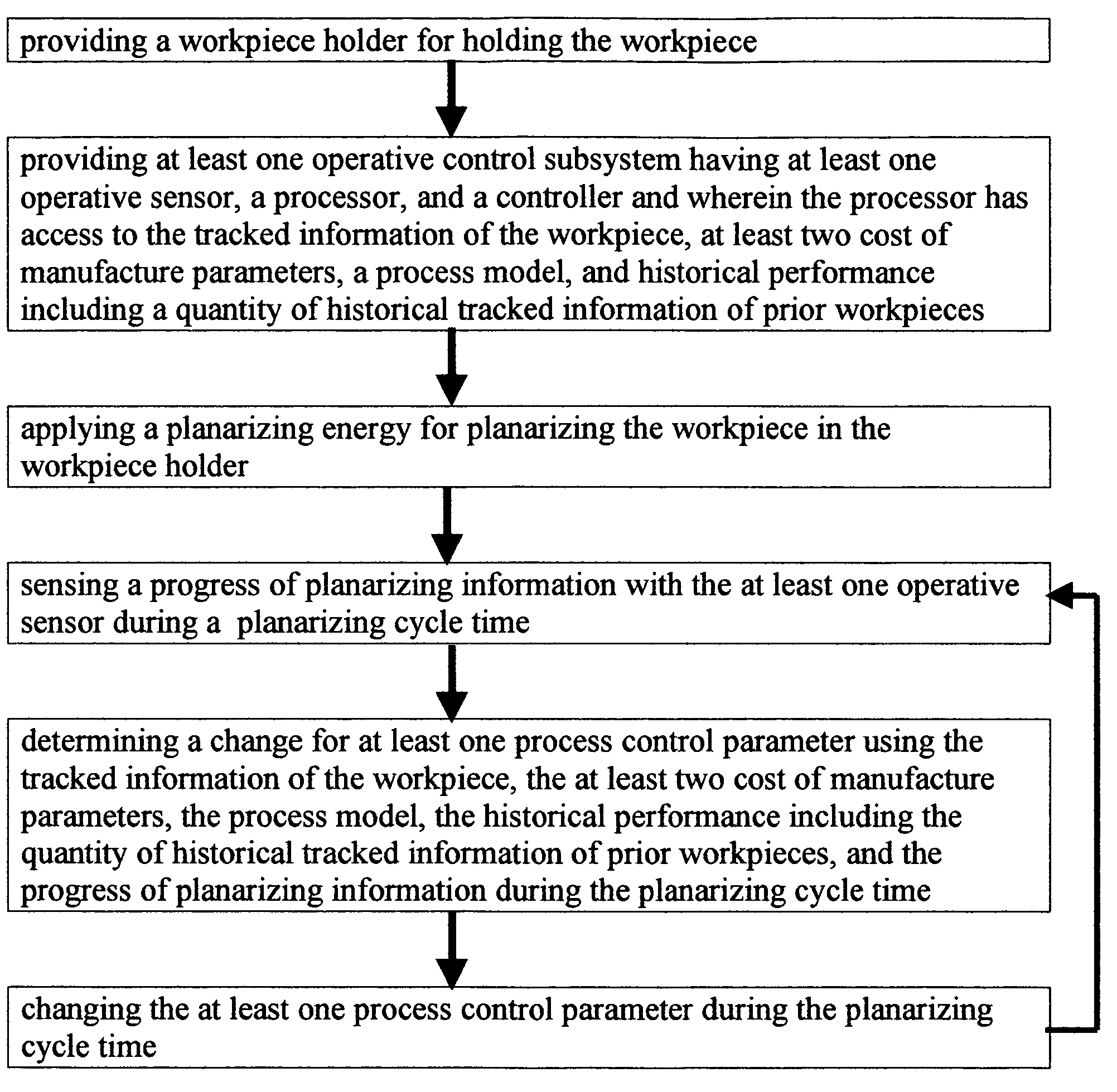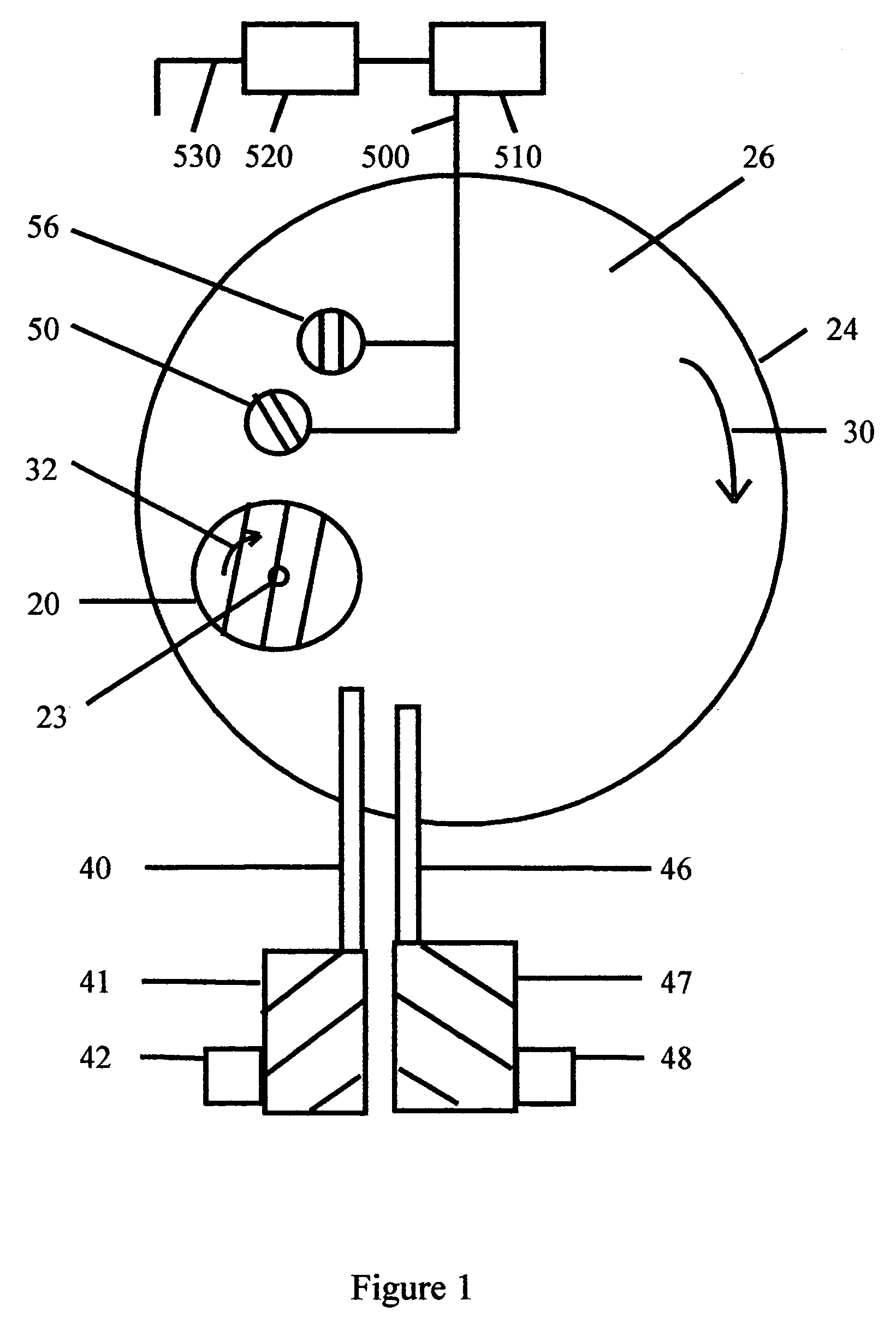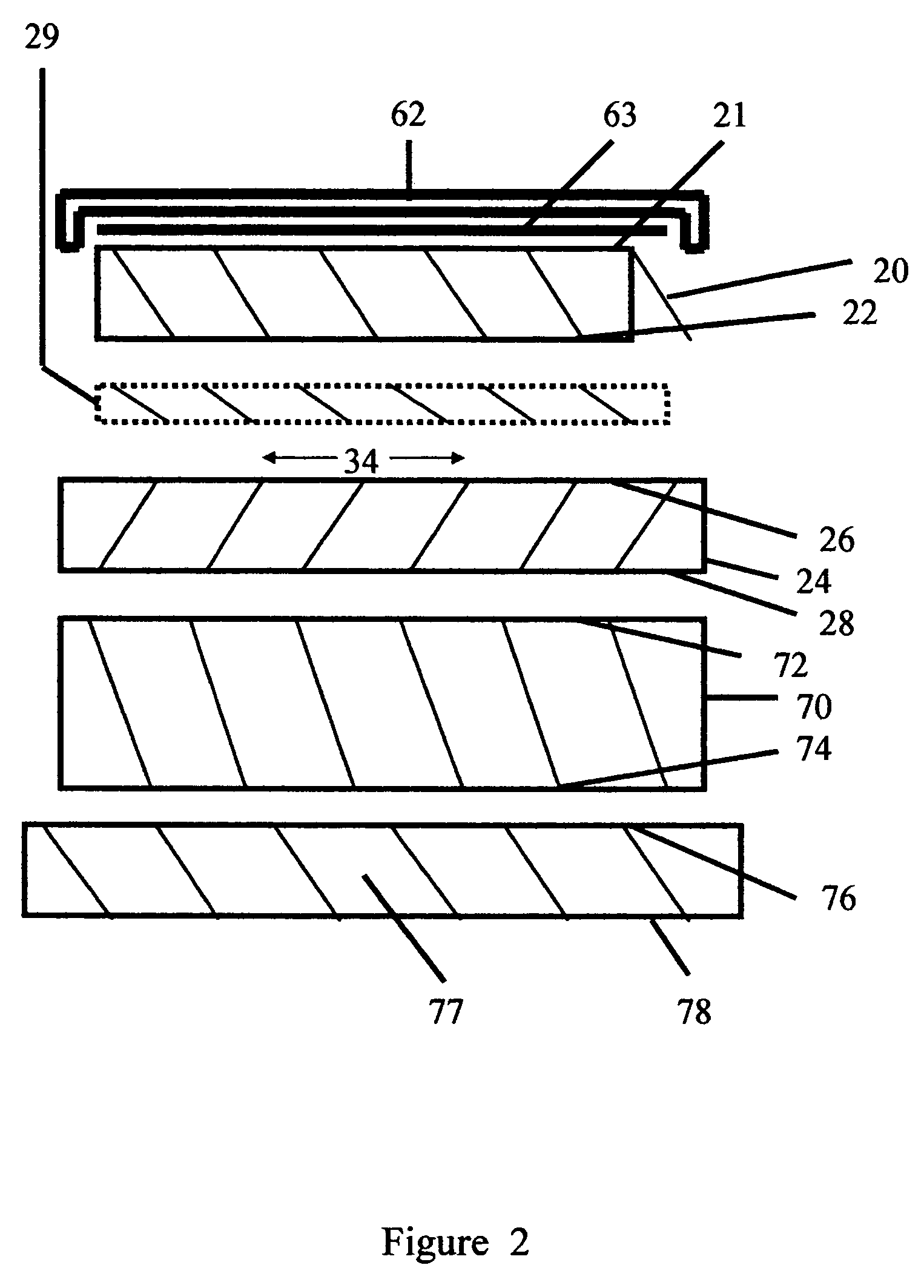Advanced wafer planarizing
a technology of advanced wafers and wafers, applied in the direction of total factory control, programme control, lapping machines, etc., can solve the problems of increasing the cost of manufacture, the control of the finishing and/or planarizing step is very complex, and the manufacturing cost of the planarizing and/or finishing step is also complex, so as to reduce the cost of manufacture, the control of the finishing and/or planarizing step is very complex, and the cost of manufacturing is increased.
- Summary
- Abstract
- Description
- Claims
- Application Information
AI Technical Summary
Benefits of technology
Problems solved by technology
Method used
Image
Examples
Embodiment Construction
[0099]The semiconductor industry is in a relentless journey to increase computing power and decrease costs. Planarizing of a semiconductor wafer using in situ calculations of cost of manufacture parameters to improve control of finishing parameters can help simultaneously to decrease cost and reduce unwanted defects. Real time control of the planarizing energy on the semiconductor wafer surface using cost of manufacture parameters for real time optimization is particularly useful and preferred to help to change and / or reduce cost of manufacture.
[0100]Using current cost of manufacture parameters along with a friction sensing method to evaluate and adjust the lubrication in a manner that adjustably controls the coefficient of friction in the operative finishing interface can be particularly effective at reducing unwanted surface defects such as microscratches and microchatter for some applications. This system is particularly preferred for planarizing or finishing with abrasive, more ...
PUM
| Property | Measurement | Unit |
|---|---|---|
| diameter | aaaaa | aaaaa |
| diameter | aaaaa | aaaaa |
| thick | aaaaa | aaaaa |
Abstract
Description
Claims
Application Information
 Login to View More
Login to View More - R&D
- Intellectual Property
- Life Sciences
- Materials
- Tech Scout
- Unparalleled Data Quality
- Higher Quality Content
- 60% Fewer Hallucinations
Browse by: Latest US Patents, China's latest patents, Technical Efficacy Thesaurus, Application Domain, Technology Topic, Popular Technical Reports.
© 2025 PatSnap. All rights reserved.Legal|Privacy policy|Modern Slavery Act Transparency Statement|Sitemap|About US| Contact US: help@patsnap.com



